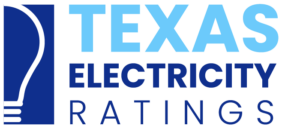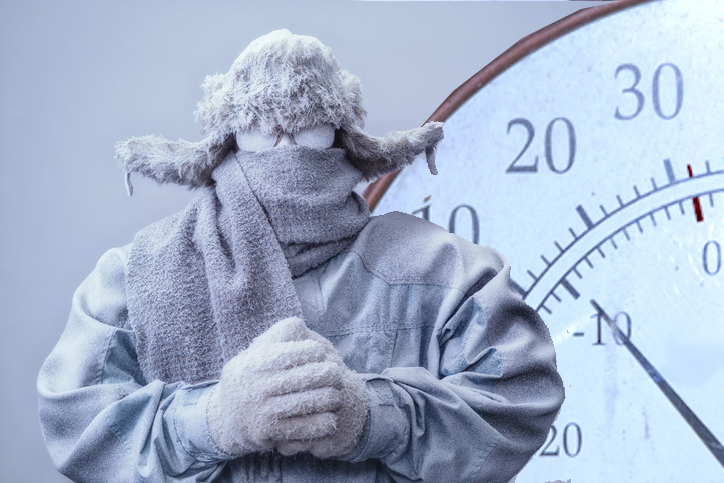How High Will My Texas Winter Heat Bills Be?
Even though you may have the best energy supplier in Texas, you might see a higher heating bill this month. During January, we’ve seen a stretched polar vortex swoop across the country 5 times. And, it’s been blasting frosty temps from Helena, MT to Houston, TX. Obviously, winter isn’t over yet. So, a lot of folks in Texas are worrying about high heating bills. In order to help consumers understand winter heat costs, we’ve gathered up heating systems costs for each state, including Texas. And, we’ve also broken it down by the four primary heating fuels.
How Much Does Heat Cost in Texas?
Surprisingly, spacing heating accounts for 42% of energy consumption in U.S. homes. And polar short vortex cold snaps can also add on to that. So, even in Texas, heating your home can eat a big chunk of your yearly budget.
Of course, homeowners can choose from an array of heating systems. But in general, most homes rely on only one. With this in mind, the most common heating systems are natural gas, electric, propane, wood, and heating oil. But, these systems are not all used by the same number of homes. Therefore, figuring out an accurate average heating cost for each state can get a little bit tricky.
In order to find realistic costs, we multiplied heating fuel prices in each state by their usage percentage. We then used this to create a weighted average cost. As a result, consumers can easily see costs for heating systems they're more likely to use. It also scales back the impact of fuels that are used in only a few homes.
What Heating Systems Are Most Common?
To start, natural gas and electricity make up about two-thirds of the US heating fuel mix. Likewise, both heating oil and propane are widely used in certain areas. Wood heat and solar are also used in many parts of the country. But, their costs are hard to track. For these reasons, we're leaving them out.
Which 10 States Have the Highest Winter Heat Costs?
| State | Primary Fuel | Weighted Cost |
| Alaska | Natural Gas | $235.50 |
| Rhode Island | Natural Gas | $217.48 |
| Oklahoma | Natural Gas | $193.33 |
| New Hampshire | Fuel Oil | $191.20 |
| Connecticut | Fuel Oil | $177.80 |
| Vermont | Fuel Oil | $177.70 |
| Maine | Fuel Oil | $165.94 |
| Ohio | Natural Gas | $160.61 |
| Missouri | Natural Gas | $158.25 |
| West Virginia | Electric | $150.07 |
These 10 States Have the Cheapest Winter Heat Costs
| State | Primary Fuel | Weighted Cost |
| Hawaii | Electric | $8.46 |
| Florida | Electric | $26.00 |
| Arizona | Electric | $30.39 |
| Nevada | Natural Gas | $45.99 |
| California | Natural Gas | $51.36 |
| New Mexico | Natural Gas | $54.97 |
| Idaho | Natural Gas | $58.73 |
| Louisiana | Electric | $60.82 |
| Utah | Natural Gas | $67.54 |
| District of Columbia | Natural Gas | $69.61 |
Space Heating in Warmer States
Unlike many U.S. homes, nearly 5% do not use space heating. EIA data for Florida shows that 8% of homes do not have any heating. Meanwhile, another 20% do have heating but don't use it. Similarly, 85% of Hawaiian homes also don't have heating installed. Still, the EIA 2020 Residential Energy Consumption Survey (RECS) shows that 5% of Hawaiian homes use electric heat. For that small reason, electricity is the primary heating fuel. Moreover, we know at least some heat (about 1.4 mmBTUs) is used during the winter. Roughly speaking, that equals 410 kWh. So, our data must assume that Hawaii has a least one winter heating month for its weighted monthly cost.
How Does Texas Ranks for Heat Cost?
Parts of Texas maybe as sunny and warm as Florida but winter visits them anyway. Texas sees 5 months of winter and ranks at 36th for monthly heating costs. These costs come out to $96.42; close to the U.S. average. However, more than half of homes in Texas cities use electricity. The average energy used for heat runs about 450 kWh. So, an electric heat bill runs closer to $69.50. However, climate data shows the state has been seeing extreme winter weather more frequently since 2000. Some of the most noticeable cost impacts occurred over the last ten years. Because many Texas homes built before 1990 usually lack adequate insulation and air sealing, they will doubtlessly see higher heating bills.
Comparing Texas Heating Fuel Costs
While our data covers average costs for the four main heating systems, how they relate to each other shows more. In fact, the actual energy cost and efficiency of each fuel can show a lot about a home's heat. To that end, we compared the four heating fuel systems by their cost ($/mmBtu) and their energy usage (mmBtu).
In the usage data from the EIA 2020 RECS, we noticed that gas heated homes paid less per mmBtu than other fuels. In contrast, electricity cost around 7 times more per mmBtu than natural gas. However, when we compared gas to electric, we found that gas tended to use 4 to 10 times more energy.
- Heating oil systems consumed 58.5 mmBtu.
- Natural gas used 56.6 mmBtu.
- Propane 35.7 mmBtu.
- Electric systems used the least energy, 8.5 mmBtu.
Comparing Heating Fuel Efficiency
One drawback to burning fuel is the need to keep fire and toxic exhaust fumes out of the home's living space. In short, some heat goes up in smoke. As a result, gas heated homes tend to pay higher winter heating costs despite the fuel having the cheapest price. In contrast, homes using electric heating used far less energy and paid lower heating costs. This also held true in our cost data. In brief, the average heating season cost for electricity was the cheapest for every state.
Still, it's important to say that we're not favoring electric heat systems over natural gas. Rather, we want to underscore it's important for consumers to keep their heating systems running efficiently. In that way, they can save more money on their winter heat costs.
Texas Heating System Efficiency Tips
- At least every 6 months, pour bleach or vinegar into condensate tubes on condensing gas furnaces. Doing so can prevent clogs and unexpected shut downs.
- During fall, check that furnace air intakes and exhausts outside are clear of leaves and other debris.
- In addition to changing air filters regularly, only use air filters that the manufacturer recommends.
- Occasionally, inspect the blower for dust build up. Doing so can indicate air leaks around the filter.
- Also seal and insulate ductwork. Coupled with a clean air filter, this can really improve your system's air circulation.
- Keep baseboard heating systems clean so air can circulate freely through them.
- Similarly, keep the area around outdoor heat pump condenser unit free of leaf litter, snow, and other obstructions.
- Generally for radiant heat systems, regularly check the boilers. In particular, check water levels and periodically bleed radiators to release trapped air.
- Once in a while, check the boiler's burner. You want to be sure it's getting enough air and nothing blocks the exhaust flue.
- In the same fashion, keep the area around the boiler free of boxes and other stored items.
- Above all, air seal and add more insulation to your home.
Methods
Firstly, we based the number of heating months on the EIA Degree Day per Census Zone. A good analog to keep in mind here are the first and last frost dates in a state or region. The average number of heating months in the US is 6.3. For many utilities in the northeast and mid west, heating season runs October - May. That's because these regions still experience stretches of cold weather from early October right up to Memorial Day. EIA states Alaska heating season runs 6 months, from October - March.
In order to find the weighted average cost, we multiplied each heating fuel price of by the percent of its use in a state. We then added up the products to find the weighted average cost. This produced an average cost that reflects what most consumers in a state pay for heating.
Sources
Heating Consumption data is from the EIA 2020 Residential Energy Consumption Survey (RECS).
https://www.eia.gov/consumption/residential/data/2020/index.php
Residential Space Heating Fuels By State (2020 RECS)
https://www.eia.gov/consumption/residential/data/2020/state/pdf/State%20Space%20Heating%20Fuels.pdf
EIA electricity and natural gas pricing data reflects bundled costs from October 2024.
Bundled costs = the price of the energy + the utilies' charge for delivering it to residential homes.
Natural Gas: https://www.eia.gov/naturalgas/monthly/
Electricity: https://www.eia.gov/electricity/monthly/
EIA pricing for residential heating oil and propane are last prices available for October, 2024.
https://www.eia.gov/petroleum/data.php

